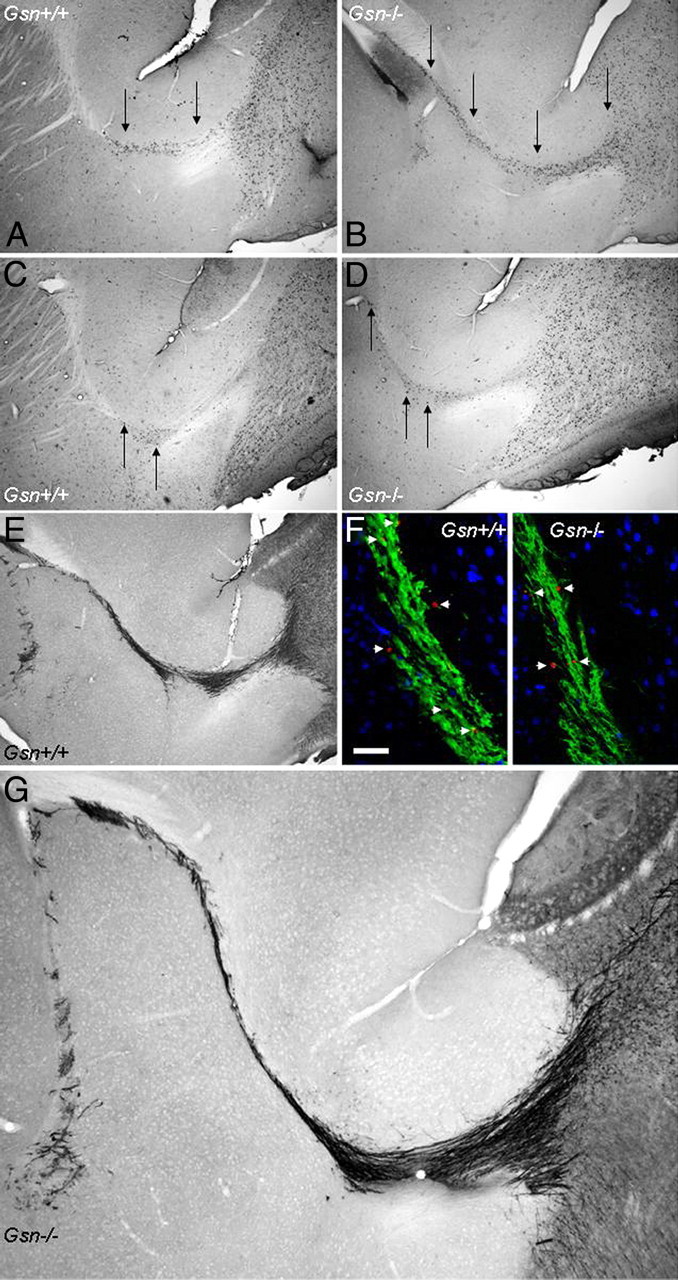Figure 3.

Impairment of RMS migration in Gsn−/− mice. A–D, Migration of newly generated cells through the rostral migratory stream was analyzed in a BrdU pulse chase experiment. Representative parasagittal images of the distribution of BrdU immunoreactivity at 10 (A, B) and 17 (C, D) days after a 5 d course of daily intraperitoneal BrdU demonstrates that BrdU+ cells of Gsn−/− mice (B, D) remain in the RMS longer and travel more slowly compared with BrdU+ cells of Gsn+/+ mice (A, C). The arrows mark BrdU+ cells in the rostral migratory stream. E, G, There were no apparent differences in the pattern of DCX staining in the RMS between genotypes. F, Furthermore, TUNEL staining (red) of the RMS (DCX, green) in parasagittal brain sections did not reveal significant differences between Gsn+/+ and Gsn−/− mice. Arrowheads, TUNEL+ nuclei. Blue, NeuN. Scale bar: (in F) 50 μm.
